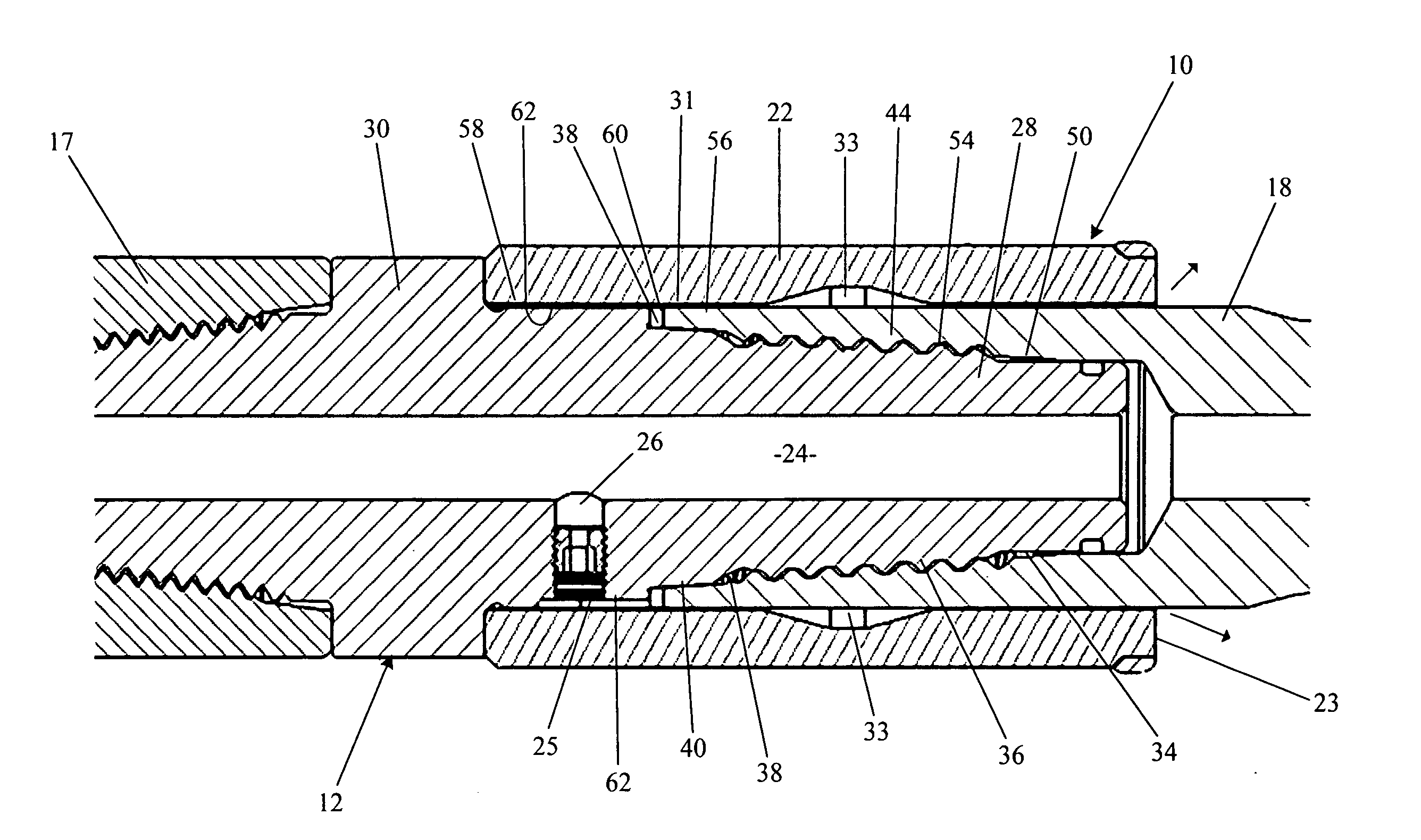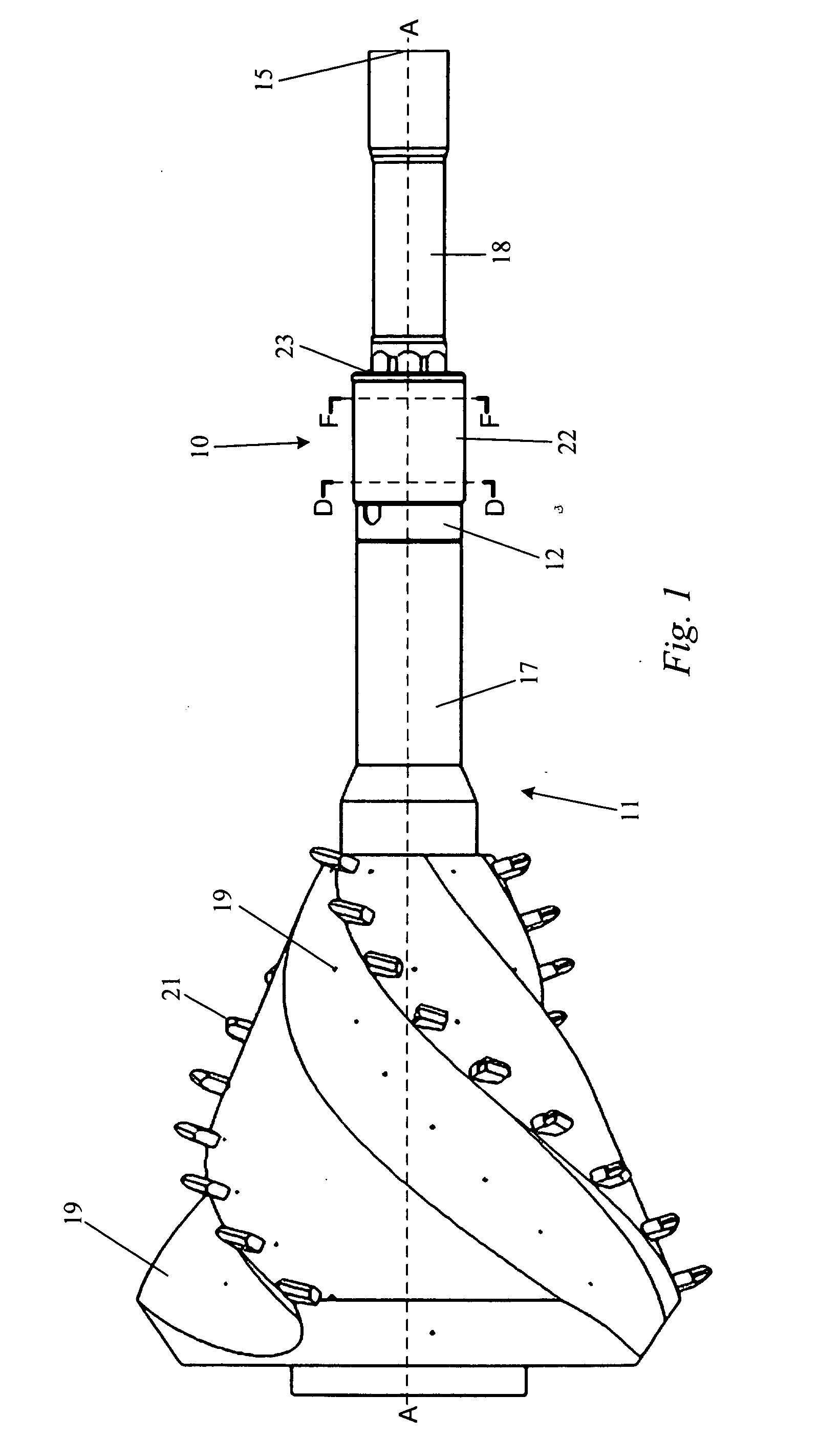Joint for use in back reaming
a back reaming and joint technology, applied in the direction of shaft equipment, mechanical equipment, borehole/well accessories, etc., can solve the problems of increasing the abrasion of the joint coupling between the drill string and the tool, increasing the abrasion of the joint, and exposing the tooling to additional wear and tear
- Summary
- Abstract
- Description
- Claims
- Application Information
AI Technical Summary
Benefits of technology
Problems solved by technology
Method used
Image
Examples
Embodiment Construction
[0018]According to one embodiment of the disclosed invention, drill fluid normally moves down a central path in the drill rod, through the quick connect joint and then finally to the back reamer. In this embodiment of the invention, that central fluid path is tapped with what is effectively a controlled leak that delivers drilling fluid to an annular space within the torque sleeve of the joint preferably through a single metering orifice. The orifice can be sized as needed, or a plug can be used in its place, stopping discharge should conditions not require it. By collecting fluid in the annular space, it allows fluid to be discharged in modest amounts at the leading end or face of the torque sleeve during back reaming operations.
[0019]With a system flow rate during back reaming in the range of 10 to 50 gallons per minute, approximately 1 to 3 gallons per minute (about 5% to 30%) will be sidetracked to for discharge at the torque sleeve. In this manner, only a minor fraction (less t...
PUM
 Login to View More
Login to View More Abstract
Description
Claims
Application Information
 Login to View More
Login to View More - R&D
- Intellectual Property
- Life Sciences
- Materials
- Tech Scout
- Unparalleled Data Quality
- Higher Quality Content
- 60% Fewer Hallucinations
Browse by: Latest US Patents, China's latest patents, Technical Efficacy Thesaurus, Application Domain, Technology Topic, Popular Technical Reports.
© 2025 PatSnap. All rights reserved.Legal|Privacy policy|Modern Slavery Act Transparency Statement|Sitemap|About US| Contact US: help@patsnap.com



